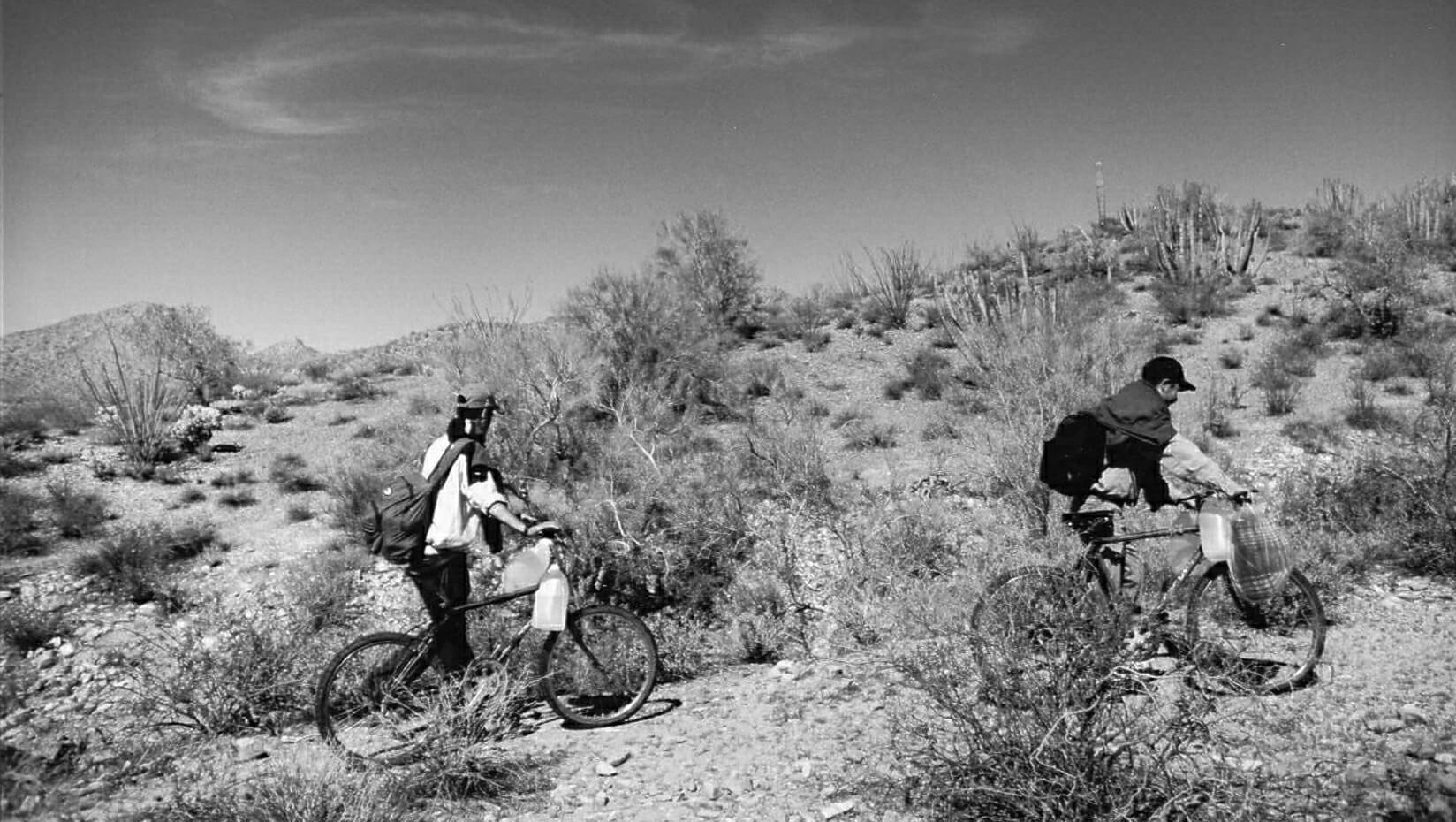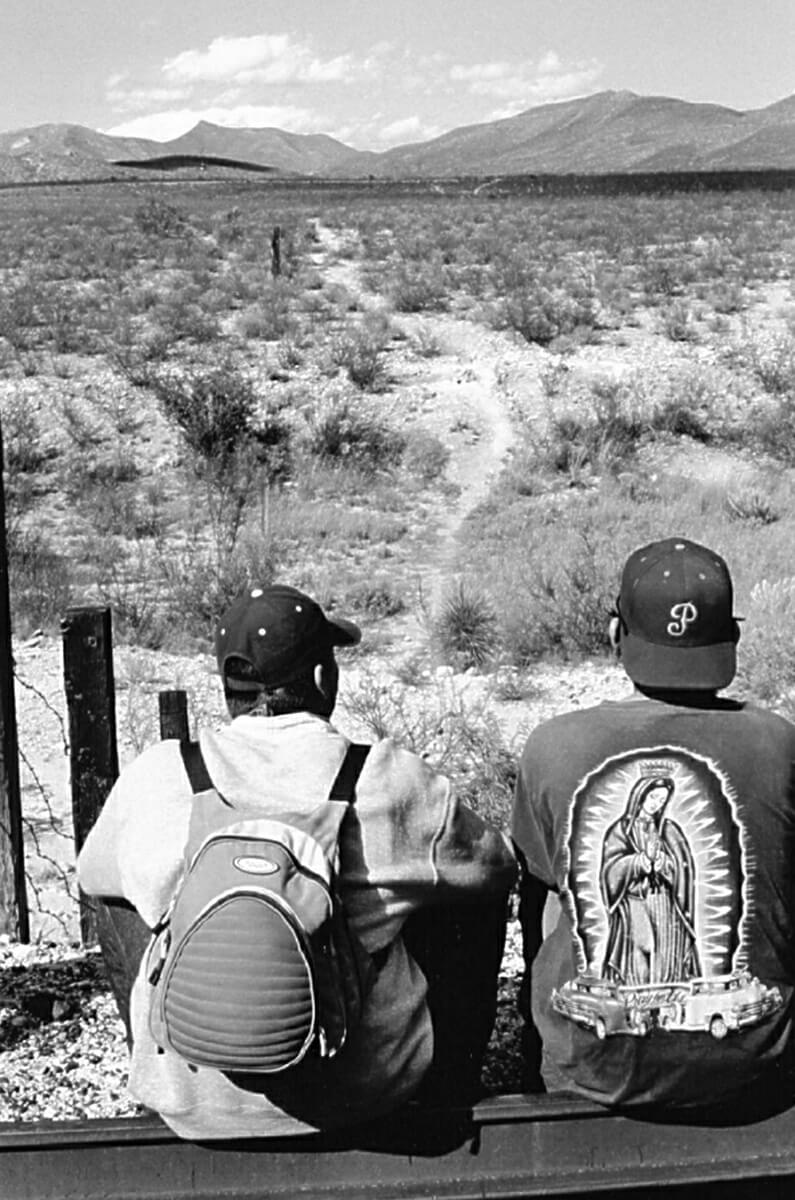
Ph.D. anthropology student organizes ‘Migrant Artifacts’ exhibit at Hudson Museum
A toddler’s sneaker, a backpack, a copy of “El Diaro de Ana Frank.”
These are some of the objects left behind by thousands of people migrating to the United States through the Sonoran Desert.
Documentary photographer Michael Hyatt photographed these and other abandoned items to bear witness to a perilous — sometimes fatal — journey: the northward movement of thousands of undocumented people across the Arizona-Sonora border.
An exhibit of Hyatt’s stark black-and-white photographs titled, “Migrant Artifacts: Magic and Loss in the Sonoran Desert,” is on display through June 29 in the Minsky Culture Lab of the Hudson Museum at the Collins Center for the Arts.

In the foreword of his book of the same name, Hyatt wrote that for centuries immigrants have come to the U.S., some on ships of sail and steam. These photographs, he writes, are evidence of the latest migration.
The photographs also are “a story of individuals — a man who left his plastic sandals behind…, a woman for whom a backpack became too heavy so she dropped it in the sand, a little girl whose pretty dress hangs ghostly white from the limb of a mesquite tree. These are people whose names we will never know, who faces we may never see,” Hyatt wrote.
It’s fitting to exhibit the photographs in the Hudson Museum, says director Gretchen Faulkner.
“The Hudson Museum regularly presents exhibits that showcase UMaine research and that complement the museum’s collections,” she says.
“Pre-eminent among the Hudson Museum’s holdings is the William P. Palmer III collection of pre-Columbian artifacts from Mexico and Central America — these objects are from the ancestral homelands of the migrants.”
Sara Sophia Lowden, a University of Maine anthropology and environmental policy Ph.D. student from Tucson, Arizona, organized the exhibit. Lowden met Hyatt at home during a break, and was inspired to bring his work to Orono.
“Maine is so far away from the Sonoran Desert, and these photographs help illustrate the harsh reality of this environment,” she says.
“I hope the exhibit will draw attention to the fact that, despite a decrease in undocumented migrants crossing the border, the deaths of migrants in the desert continue to increase. In the last 20 years, thousands of human remains have been recovered, but bodies don’t last long in that climate, so we don’t actually know how many people have died.”
In 2001, Hyatt noticed that news reports indicated a dramatic increase in migrant deaths along the U.S./Mexico border. Soon thereafter he began documenting efforts of the volunteer group Humane Borders.
Hyatt saw and photographed backpacks, water jugs, toiletries, clothing and family photos.
“I was intrigued by what the items were and even more by what they represented in the lives of those who were risking their lives in a harsh environment…[O]ne day I came across ‘The Diary of Anne Frank’ in Spanish in a migrant layup camp open…as if someone had just been reading it and for some reason had to leave,” he writes. “‘The Diary of Anne Frank’ is an unusual reading choice. Perhaps that person identified with Anne Frank and was even inspired by her example.”
Lowden, who for her doctorate is exploring the impact of women’s leadership roles in conservation efforts in shared watersheds, hopes the exhibit will foster conversations in which people can find common ground.
Hudson Museum hours and information about the temporary Rangeley Road closure on campus are online.
Contact: Beth Staples, 207.581.3777
